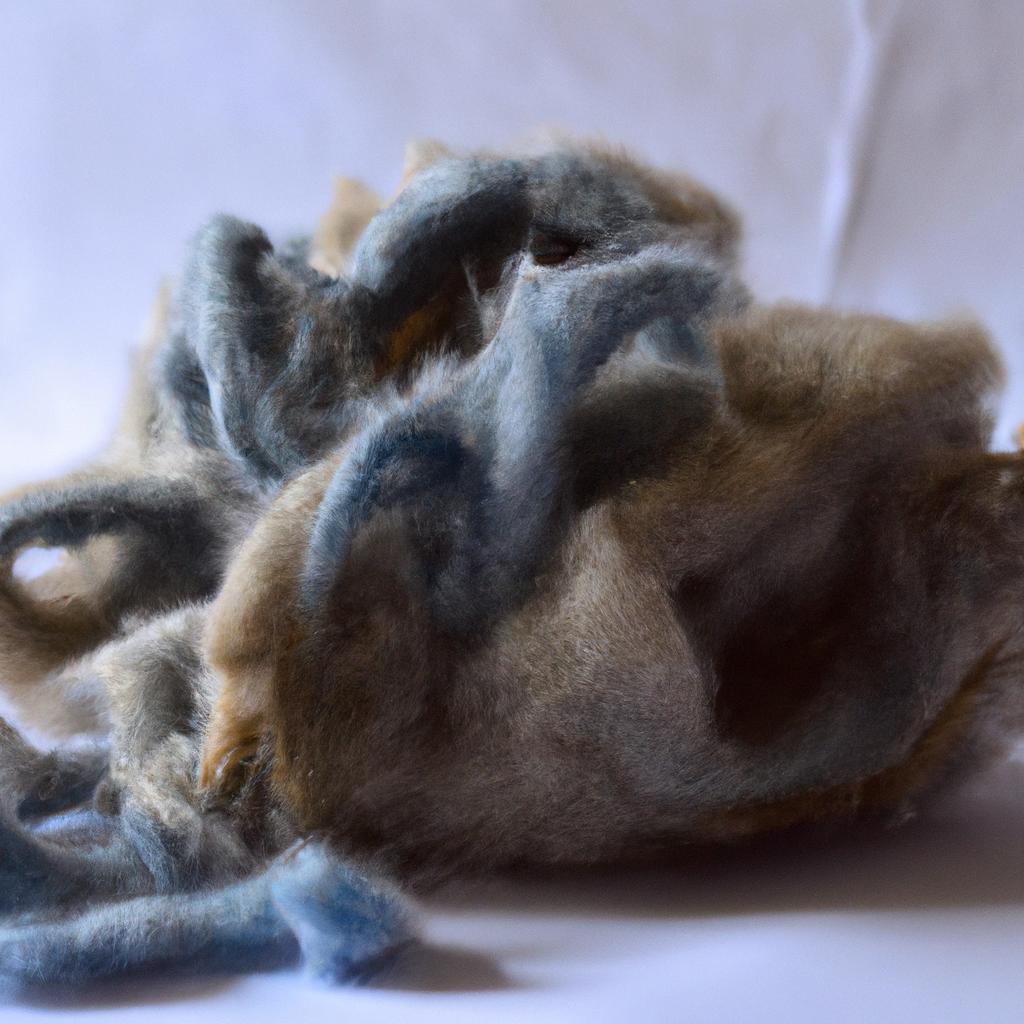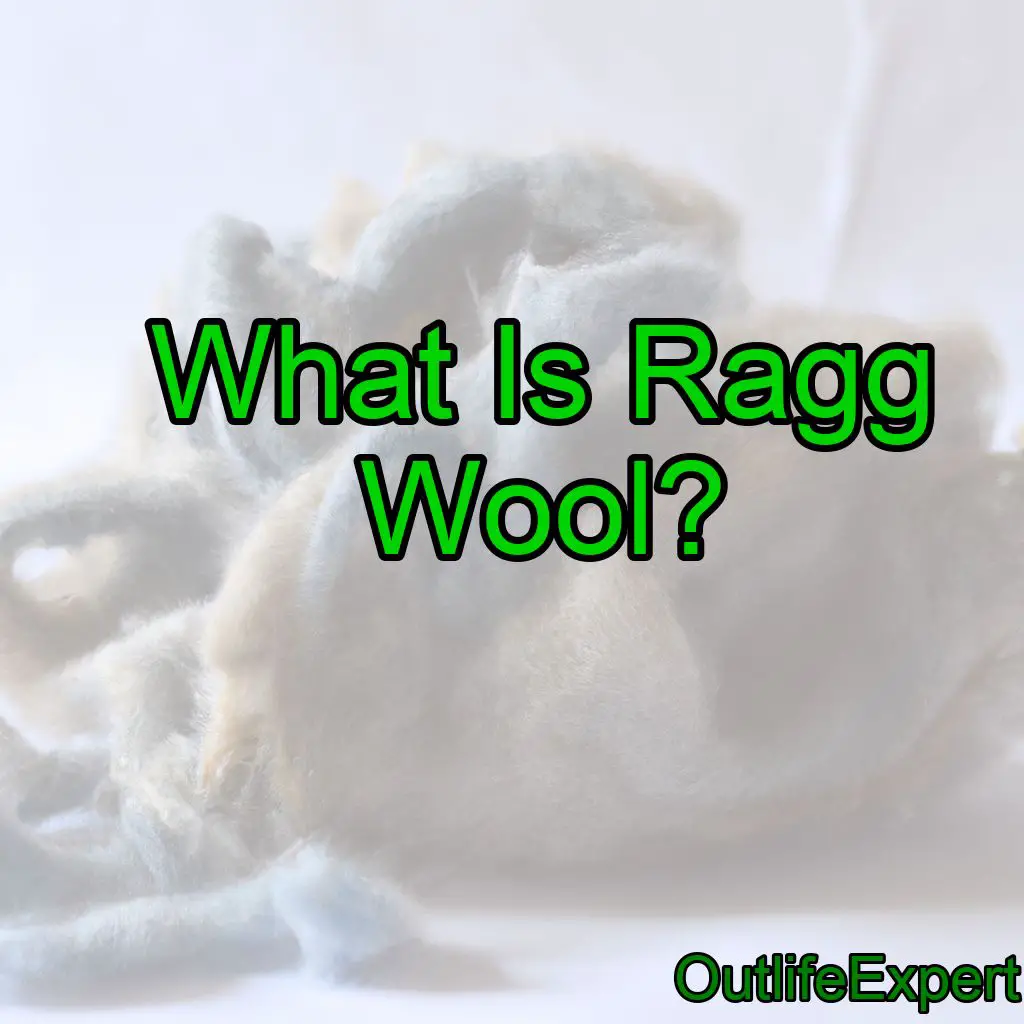If you’re looking for a fabric that will stand up to the elements while still being comfortable, then look no further than ragg wool!
Ragg wool is a type of yarn made from a blend of natural wool fibers and synthetic materials, typically nylon or acrylic. It is known for its durability, warmth, and moisture-wicking properties. Ragg wool is commonly used in outdoor clothing and accessories, such as socks, gloves, and hats, as it provides excellent insulation and comfort in cold and wet conditions. To maintain the quality of ragg wool items, it is recommended to hand wash them in cold water and lay them flat to dry.
This classic outdoor material has been around for centuries and is renowned for its durability, breathability and insulating properties.
It’s great choice if you’re after comfort and protection on your next hike or adventure.
Ragg wool is made from a blend of lambswool, cotton and polyester, making it an ideal option when it comes to keeping warm in cold climates.
Its unique composition gives it superior insulation abilities compared to other fabrics – so whether you’re out exploring nature or just taking a leisurely stroll through town, you can rest assured that ragg wool will keep you cozy all day long.
Overview
Ragg wool is like a whisper of freedom in the wind. It’s a fabric that embodies all the beauty and power of nature, with its softness benefits, popularity surge, and environmental impacts.
As an outdoor expert, I can confirm its historical origins have made it one of the most sought after materials for clothing today.
Shearing techniques used to produce this wool are just as important as its look and feel. Its fibres must be carefully cultivated so they remain delicate enough to provide warmth without being overpowering or bulky.
The result? A lightweight material perfect for any adventure enthusiast who desires comfort while exploring the outdoors!
It’s no wonder why ragg wool has become such an iconic fabric over time: not only does it offer unparalleled protection from the elements but also keeps us connected to our natural roots.
Moving forward into the next section about characteristics, we’ll explore further how this wonderful material works in more detail.
Characteristics
Ragg wool is a unique type of fabric that has been used for centuries in outdoor clothing. The combination of its bulkiness, durability and insulation make it an ideal material to wear when out exploring nature. It’s also lightweight, so you don’t have to worry about your clothes weighing you down on hikes or camping trips.

Despite being thick, the fabric shrinks relatively little when washed which makes it more durable than other types of fabrics over time. When choosing outdoor apparel made from ragg wool, it’s important to pick items with quality construction that are designed to last through all kinds of weather conditions. Quality materials will also ensure maximum warmth and comfort while outside and can be relied upon no matter how extreme the temperatures get.
With such dependable features, ragg wool is sure to keep any explorer safe and warm during their travels! As we move into discussing the manufacturing process behind this fabulous fabric…
Manufacturing Process
Spinning wool is a process that takes raw wool and turns it into a useable material. Felting wool is the process of transforming wool fibers into a strong, dense fabric. Both processes are essential in creating ragg wool, a durable and versatile material used in many outdoor garments.
Spinning
When it comes to manufacturing ragg wool, spinning is an integral part of the process.
The first step in making this classic fabric involves selecting the right fibers for the job and then dyeing them according to specific techniques that create unique patterns and textures.
Once that’s done, it’s time to break out the spinning wheels!
Working with a variety of different materials like cotton, linen or synthetic blends creates a unique look for each project.
As you take control over how tight or loose your yarn becomes through expertly manipulating these tools, you’ll be able to watch as raw fiber is transformed into something special.
Spinning isn’t just about creating beautiful fabrics – it’s also about allowing yourself to find freedom in every stitch.
Felting
Once you’ve mastered spinning, it’s time to take your creativity a step further with felting!
This process is all about garment construction and combining different knitting techniques. It involves taking fibers like wool or silk and needling them together into a single fabric.
By manipulating the material in this way, you can create unique textures that will make your garments stand out from the crowd.
As you work on mastering these methods, you’ll feel empowered as you put dyeing techniques to use and watch how they bring life to each design.
With every stitch, you’ll discover more freedom and be able to construct pieces that are truly one of a kind.
So go ahead – let yourself explore the world of felting- there’s no better feeling than creating something special with your own two hands.
Applications
Ragg wool is a unique type of fabric that has been used for centuries in outdoor apparel. It’s made from 100% wool and offers superior thermal properties, making it an ideal choice for cool climates. With its high-quality blend of fibers, ragg wool is durable and long lasting, perfect for sustainable use on the trail or around town.
In addition to its superior insulation qualities, ragg wool also stands out with its natural dyeing techniques and knitwear designs. Not only does this give the fabric a unique look but it adds texture too. From classic sweaters to thick winter coats, there are plenty of stylish options available when using ragg wool as your base material.
When caring for items made from ragg wool, hand washing is often best due to the delicate nature of the fabrics dyes and textures. When machine washing be sure to use cold water and mild detergents designed specifically for wools. Additionally, air drying garments will help retain their shape over time – no dryers needed!
With its combination of warmth, durability and style – plus easy care tips – ragg wool is quickly becoming one of the most popular materials for outdoor apparel today. Whether you’re hitting the trails or just looking for something comfortable at home, this versatile type of fabric is definitely worth considering!
Frequently Asked Questions
What Is The Cost Of Ragg Wool?
Are you looking for a durable, sustainable and stylish wool option? Ragg wool may be the perfect choice!
Not only is it known for its superior durability compared to other types of wool, but also its affordability. Plus, with proper care instructions and mindful dyeing techniques, this fabric can last through many years of wear-and-tear while still staying vibrant in color.
Additionally, ragg wool’s unique weaving methods help ensure that air can circulate throughout the garment which adds an extra layer of comfortability when outdoors.
So if you’re considering investing in ragg wool, rest assured knowing it will provide optimal quality at low cost.
Where Can I Purchase Ragg Wool?
If you’re in the market for ragg wool, there are a few things to consider when making your purchase.
From buying tips and dyeing techniques to care instructions and sustainability practices, this natural fiber offers plenty of options that can make knitting patterns stand out from the crowd.
As an outdoor expert, I would recommend doing some research before investing in any kind of ragg wool so you know exactly what you’re getting – not only does it help ensure quality but it also gives you greater freedom over how your project turns out!
Is Ragg Wool Suitable For All Climates?
Ragg wool has become a popular choice among outdoor enthusiasts for its excellent durability, sustainability, and warmth retention.
Its moisture-wicking capabilities make it an ideal fabric for all climates, as it keeps you warm without trapping in too much heat or humidity.
It is also highly breathable, meaning that air circulates around your body while still retaining the necessary warmth to keep you comfortable during those chilly nights outdoors.
Ragg wool is sure to provide the perfect balance of comfort and freedom no matter where adventure takes you!
Is Ragg Wool Hypoallergenic?
Is ragg wool hypoallergenic?
Outdoor experts say yes! Ragg wool is made from sustainable sourcing and has been proven to be allergy friendly. The dyeing process used for the fabric helps reduce odors, making it perfect for those with allergies or sensitive noses. Plus, washing instructions are easy to follow; meaning you can keep your garment looking and feeling great without worry of unwanted reactions.
With these precautions in place, outdoor enthusiasts can rest assured that their clothing choices are not only stylish but also kind to their skin and environment.
Does Ragg Wool Stretch Or Shrink Over Time?
Ragg wool is a popular choice for outdoor garments due to its natural fibers and ability to maintain shape over time.
With proper washing instructions, this fabric will remain comfortable while providing durability in any environment.
While it’s not prone to stretching or shrinking, you’ll still want to keep an eye on the comfort levels of your favorite piece if exposed to extreme temperatures.
When properly cared for, ragg wool provides protection without sacrificing freedom of movement – perfect for adventurers seeking an extra layer of defense against nature’s elements.
Conclusion
Ragg wool is an amazing material for outdoor apparel and accessories. It’s lightweight, warm, and has a unique look that stands out in any environment.
Not only does it offer superior protection from the elements, but its cost won’t break your wallet! You can find Ragg wool items online or at local stores with ease – making it even easier to stay warm and stylish this winter season.
The best thing about Ragg wool? Its ability to keep you both cool AND warm depending on the climate. This miraculous fabric adapts to whatever temperature comes its way – truly something magical! Plus, it doesn’t irritate sensitive skin like other fabrics might, so those of us with allergies don’t have to worry about adverse reactions when wearing it.
Finally, I’d be remiss if I didn’t mention how great Ragg wool holds up over time: no stretching or shrinking here! It will remain looking sharp throughout all types of wear and tear – almost as if it were brand new every single day – which is nothing short of phenomenal!
All-in-all, Ragg wool is easily one of the most versatile materials available today; an absolute must-have for anyone serious about their outdoor lifestyle.





